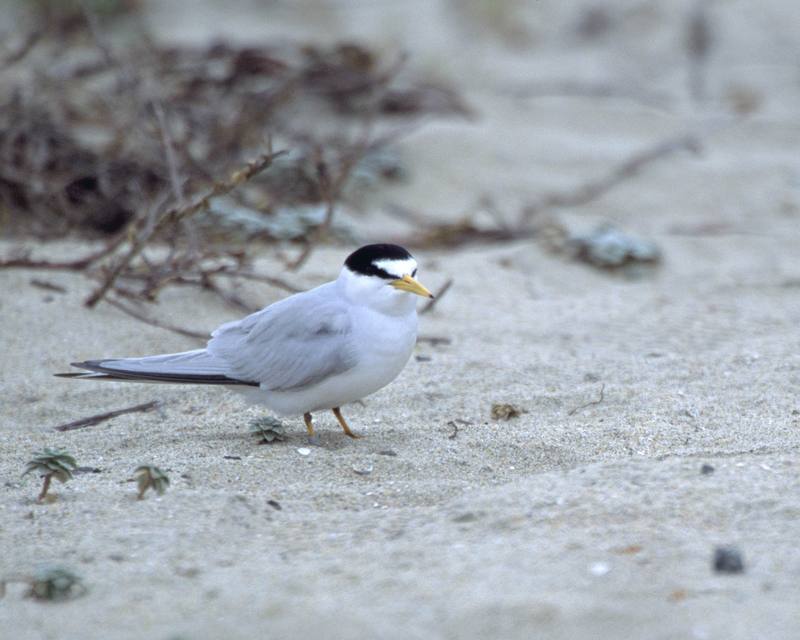From the U.S. Fish and Wildlife Service's online digital media library.
Check http://images.fws.gov/ for higher quality version.
Metadata
Title: Endangered California Least Tern
Alternative Title: Sterna antillarum browni
Creator: Hagerty, Ryan
Source: WV-General 9 -343
Publisher: U.S. Fish and Wildlife Service
Contributor: NATIONAL CONSERVATION TRAINING CENTER-PUBLICATIONS AND TRAINING MATERIALS
Language: EN - ENGLISH
Rights: (public domain)
Audience: (general)
Subject: animals
aves
bird
birds
endangered species
California
Description
Abstract: The California least tern is one of the smallest members of its family, averaging only 23 cm (9 in.) in length. Typically, these terns forage in shallow estuaries and lagoons, diving head first into the water after a wide variety of small fish. Once considered abundant, the California least tern has suffered dramatic declines due to human encroachment and destruction of its nesting habitat. However, human disturbance related to dredging and development projects have drastically reduced tern nesting habitat. The construction of the Pacific Coast Highway in the early 20th century had a significant impact on California least terns, as well as other shorebirds, by directly destroying nesting beaches as well as making these areas more accessible to human encroachment. Today, the construction of housing developments continues to reduce suitable breeding grounds, and many remaining tern populations choose to nest on mudflats away from the ocean and man-made landfill instead. These more terrestrial sites have made the nesting terns and their chicks increasingly vulnerable to predation by the red fox as well as dogs, cats and raccoons. In 1988, three Orange County tern populations suffered losses of 75% due to fox predation. In addition, the tern’s fishing grounds have also been severely impacted by dredging, development and pollution. An interesting outcome of efforts to conserve the few remaining tern nesting sites is that the U.S. Navy, the Marine Corps and the U.S. Fish and Wildlife Service have teamed up to manage a large number of California least tern populations breeding on military lands. Because they tend to be located on remote beaches that are off-limits to the public, naval bases and training centers have become refuges for these endangered birds. Cooperation among these government agencies to minimize human impact within these sites have resulted in a dramatic recovery of tern populations--which climbed from a low of 600 breeding pairs in 1970 to 2,300 pairs in 1993. Today, over one-third of California least tern populations breed on Navy and Marine Corps bases. For more information please visit http://www.pacificbio.org/ESIN/Birds/CaliforniaLeastTern/CALeastTern_pg.htm
Date
Available: July 21 2004
Issued: July 20 2004
Modified: July 21 2004 |

